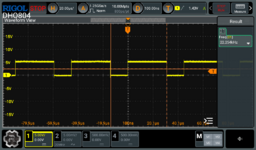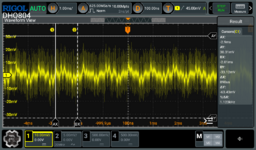NOTE! The motherboard has been ultrasonic cleaned, recapped, traces repaired, and cleaned again via ultrasonic. The Apple AC Power Adapter I am using has also been cleaned, recapped, and cleaned again.
PROBLEM: I'm hearing a soft pop sound from the speaker every 10 seconds when my 5126 Backlit Macintosh Portable is powered, regardless of backlight usage and regardless of the HDD being spun up or down. Audio below was recorded with my iPhone's mic sitting directly atop the speaker with the Volume set to 7 (max), backlight OFF, HDD spun down. I boosted the audio slightly in the video below so you can hear it better.
The little "pop" sound is not too loud sitting at a normal distance from the machine, but I am curious if you Mac Portable owners have ever heard anything like this. Yes, I hear the same thing with headphones connected to the headphone jack, and of course, the noise is more noticeable with headphones. By the way, all the noise you hear (not just the pop sound) is coming from the speaker. I recorded that in a very quiet room.
When I set the Speaker Volume to 0 (OFF), then I cannot hear the popping at all. Ditto when I use Headphones at Volume-0. However, I still hear a bit of noise through headphones when Volume=0.
Not sure what is normal, as I have no experience with the Portable until now. @Branchus , I'd love to hear your thoughts.
NOTE: I am using a Portable Battery Eliminator, which allows me to power the machine without a battery. Sadly, I have no battery to test with, and this is my first experience using a Portable, so I would love to hear from you Portable owners regarding this repetitive noise through the speaker and headphones. But I've determined that the super capacitors in the Battery Eliminator can keep my Portable live and running with backlight (but no RAM card and HDD spun down) for more than 10 seconds. I yanked the power cord out 1 second before the expected speaker pop, and I heard a pop, then I heard the pop again 10s later -- all while the machine was running off super capacitor power. This leads me to believe that even if I did have a lead acid battery, the speaker pops would remain.
Tagging some fellow Portable owners who might be willing to listen via speaker & headphones to see if theirs has the same issue:
@Sideburn @Garrett @Paolo B @techknight @wottle @ScutBoy @pocketscience @alxlab @Androda @Branchus
PROBLEM: I'm hearing a soft pop sound from the speaker every 10 seconds when my 5126 Backlit Macintosh Portable is powered, regardless of backlight usage and regardless of the HDD being spun up or down. Audio below was recorded with my iPhone's mic sitting directly atop the speaker with the Volume set to 7 (max), backlight OFF, HDD spun down. I boosted the audio slightly in the video below so you can hear it better.
The little "pop" sound is not too loud sitting at a normal distance from the machine, but I am curious if you Mac Portable owners have ever heard anything like this. Yes, I hear the same thing with headphones connected to the headphone jack, and of course, the noise is more noticeable with headphones. By the way, all the noise you hear (not just the pop sound) is coming from the speaker. I recorded that in a very quiet room.
When I set the Speaker Volume to 0 (OFF), then I cannot hear the popping at all. Ditto when I use Headphones at Volume-0. However, I still hear a bit of noise through headphones when Volume=0.
Not sure what is normal, as I have no experience with the Portable until now. @Branchus , I'd love to hear your thoughts.
NOTE: I am using a Portable Battery Eliminator, which allows me to power the machine without a battery. Sadly, I have no battery to test with, and this is my first experience using a Portable, so I would love to hear from you Portable owners regarding this repetitive noise through the speaker and headphones. But I've determined that the super capacitors in the Battery Eliminator can keep my Portable live and running with backlight (but no RAM card and HDD spun down) for more than 10 seconds. I yanked the power cord out 1 second before the expected speaker pop, and I heard a pop, then I heard the pop again 10s later -- all while the machine was running off super capacitor power. This leads me to believe that even if I did have a lead acid battery, the speaker pops would remain.
Tagging some fellow Portable owners who might be willing to listen via speaker & headphones to see if theirs has the same issue:
@Sideburn @Garrett @Paolo B @techknight @wottle @ScutBoy @pocketscience @alxlab @Androda @Branchus



